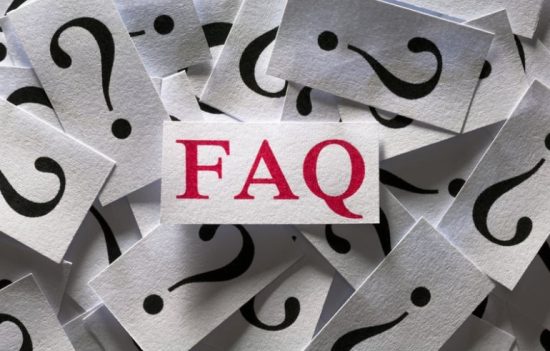Are you in the process of buying or selling a vehicle in Ontario? If so, then understanding the importance of a Safety Standards Certificate is crucial. This document not only ensures that your car meets the minimum safety requirements set by the Ministry of Transportation (MTO), but it also plays an integral role in getting your vehicle registered and on the road. In this blog post, we will provide you with an overview of what a Safety Standards Certificate entails, when it is needed, how to obtain one, and some valuable tips to prepare for a successful inspection. So buckle up and let’s dive into the world of vehicle safety standards!
Safety Standards Certificate

A Safety Standards Certificate is more than just a piece of paper; it’s a testament to the safety of your vehicle. Issued by the Ministry of Transportation (MTO), this important document confirms that your car meets the minimum safety requirements mandated by the government. However, it’s essential to understand that possessing this certificate does not guarantee the overall quality or reliability of your vehicle or its components.
Think of it as a snapshot in time – on the day that the certificate was issued to the previous owner, their vehicle met all necessary safety standards. This means that if you’re buying or registering a vehicle in Ontario, you can do so without supplying a Safety Standards Certificate but keep in mind that license plates cannot be placed on cars without one.
When a Safety Standards Certificate is Needed?
When it comes to getting a Safety Standards Certificate in Ontario, there are certain situations where you need one. Let’s take a look at when this certificate becomes necessary.
- If you’re registering a rebuilt vehicle, it’s mandatory to have a safety standard inspection and obtain the certificate. This ensures that the vehicle meets all the required safety standards and is fit for the road.
- If you’re transferring ownership of a used vehicle to someone other than your spouse, again, you’ll need to provide them with a Safety Standards Certificate. It serves as proof that the car has met all safety requirements before changing hands.
- Moreover, if you’re registering an out-of-province or out-of-country vehicle in Ontario, obtaining a Safety Standards Certificate is essential. This helps ensure that vehicles from different jurisdictions meet Ontario’s safety regulations.
- If you want to change the status of your vehicle from unfit to fit (for example after making necessary repairs), having a valid Safety Standards Certificate is crucial. It demonstrates that your car now complies with all required safety standards set by the Ministry of Transportation.
In these scenarios, getting a Safety Standards Certificate not only protects drivers and passengers but also contributes towards maintaining overall road safety in Ontario.
How to Get a Safety Standards Certificate in Ontario?

When it comes to getting a Safety Standards Certificate in Ontario, the Ministry of Transportation leaves the choice up to you. They don’t make any recommendations about which Motor Vehicle Inspection Stations (MVIS) you should use for your inspection. It’s entirely your decision. And here’s another thing – if your car needs repairs based on the initial inspection, you’re not obligated to have them done at the same MVIS. You can take your vehicle anywhere for repairs.
However, keep in mind that once you’ve had the necessary repairs done, you must bring your vehicle back to the original station for a re-inspection and issuance of the certificate. The good news is that if certain components like wheel brake components don’t need to be inspected again during this re-inspection, there won’t be an additional charge.
It’s important to note that you have 10 calendar days from the initial inspection date to get any specified defects repaired and qualify for a re-inspection. Failure to do so could result in fines ranging from $50 to $500 under the Highway Traffic Act.
Before leaving the Inspection Garage with your Safety Standards Certificate (SSC), double-check everything on it. Make sure there are no blank spots or missing information. Match up your Vehicle Identification Number (VIN) and other details with what’s on your permit.
The Ministry issues SSCs using specific forms available only at Licensed Safety Inspection Stations. These documents must be clean without any revisions or amendments; otherwise, they won’t be accepted by licensing offices.
Cost of a Safety Certificate in Ontario?
When it comes to getting a Safety Standards Certificate in Ontario, one question that often comes up is: How much will it cost? Well, let’s break it down for you. The pricing for a Safety Certificate is set at $60. This covers the inspection of your vehicle to ensure it meets the minimum safety requirements set by the Ministry of Transportation.
But wait, there’s more! If you’re looking to get an appraisal done on your vehicle or need an Uber Inspection, both services also come with a price tag of $60 each. These additional inspections can provide valuable information about the condition and value of your vehicle.
It’s important to keep in mind that these prices are subject to change and may vary depending on where you go to get your inspection done. It’s always a good idea to shop around and compare prices before making a decision.
So, when it comes time to get your Safety Standards Certificate in Ontario, be prepared with $60 in hand. And remember, this certificate is not just a piece of paper – it represents peace of mind knowing that your vehicle has met the necessary safety standards.
The Validity Period of a Safety Standards Certificate
A Safety Standards Certificate is an essential document that ensures your vehicle meets the minimum safety requirements set by the Ministry of Transportation. It acts as proof that your car met those standards at the time of inspection. But what about its validity period? How long is it good for?
Well, a Safety Standards Certificate remains valid for a total of 36 calendar days from the date of inspection. This means you have just over a month to register your vehicle before it expires. So, make sure you don’t delay in completing all the necessary paperwork and getting those license plates!
It’s important to note that if your certificate expires before you register your vehicle, you’ll need to go through the whole process again. That means another inspection and obtaining a new certificate – not something anyone wants to deal with.
To avoid unnecessary expenses and hassle, be proactive and ensure timely registration after receiving your Safety Standards Certificate. Don’t let that expiration date sneak up on you!
Tips to Prepare for a Vehicle Safety Inspection in Ontario

Before bringing your vehicle to an MTO-approved auto body shop for a safety inspection, it’s wise to invest some time and money into repairing or replacing certain components. While this may seem like an additional expense, it can significantly increase the likelihood of your car passing the inspection with flying colours.
- One crucial area to focus on is your tires. Experts recommend replacing worn-out tires as a precautionary measure. To pass the safety inspection, your tires must have a tread depth of at least 2 mm. By ensuring that your tires are in good condition, you’re taking a proactive step toward meeting the necessary standards.
- Another important aspect to address is your vehicle’s brakes. It’s always advisable to repair or replace worn brake pads before undergoing a safety inspection. The brake-shoe lining should not be less than 1.7 mm to pass the test successfully.
- In addition, paying attention to your exhaust system can greatly improve your chances of passing the vehicle safety inspection. Check for any leaks and ensure that all components are securely in place.
- Don’t overlook your suspension system. If there are significant issues with its alignment (a height difference exceeding 25 mm), there’s a high probability that your vehicle won’t meet safety standards during the inspection process. Taking care of any necessary repairs will give you peace of mind and better odds of success.
By addressing these key areas and preparing ahead of time, you’ll give yourself every advantage when it comes to obtaining a Safety Standards Certificate for your vehicle in Ontario.
Conclusion
Obtaining a Safety Standards Certificate is an essential step in ensuring the safety of your vehicle. This certificate indicates that your vehicle met the minimum safety requirements set by the Ministry of Transportation on the day it was issued. While it does not guarantee the overall quality of your vehicle, it serves as proof that it meets certain safety standards.
Whether you are registering a rebuilt vehicle, transferring vehicle ownership to a new owner, or changing the status of a vehicle from unfit to fit, having a valid Safety Standards Certificate is mandatory in Ontario. It not only allows you to register and put license plates on your car but also provides peace of mind knowing that your vehicle has undergone a thorough inspection.
FAQs – Safety Standards Certificate
1. Is safety certificate required in Ontario?
Yes, a safety certificate is required in Ontario, Canada. You cannot put plates on your car without a safety certificate.
2. Can I sell my car without a safety certificate in Ontario?
No, you cannot sell your car without a safety certificate in Ontario. The buyer will need to see the safety certificate before they can register the car in their name.
3. How long is a safety certificate good for in Ontario?
The certificate is valid for 36 days following the conclusion of the inspection. If you don’t register the car within that time, you’ll have to have the inspection redone before you can register it.
4. Do you need a safety to transfer ownership in Ontario?
Proof of vehicle insurance for Ontario. your driver’s license from Ontario. Safety Standards Certificate (you do not need this for transfers from spouse to spouse, but you do need to fill out a spousal declaration) Vehicle Ownership Permit with the back’s filled-out section.











